Kyoto
2025.06.14
[Kyoto] How to Travel Between Tokyo and Kyoto by Shinkansen, Bus and Flight

Tokyo and Kyoto are two of Japan’s most iconic cities, each offering a unique experience—one buzzing with futuristic urban energy, the other steeped in centuries of cultural tradition. For many international visitors, both cities are essential stops on a single itinerary, making efficient and reliable transportation a key part of the journey. If you're planning to travel between Tokyo and Kyoto by public transport, this guide breaks down the most popular options—such as the Shinkansen and highway buses—with travel times, costs and tips tailored for first-time visitors.
Table of Contents
How Far is Tokyo from Kyoto? What are the Available Transportation Options?
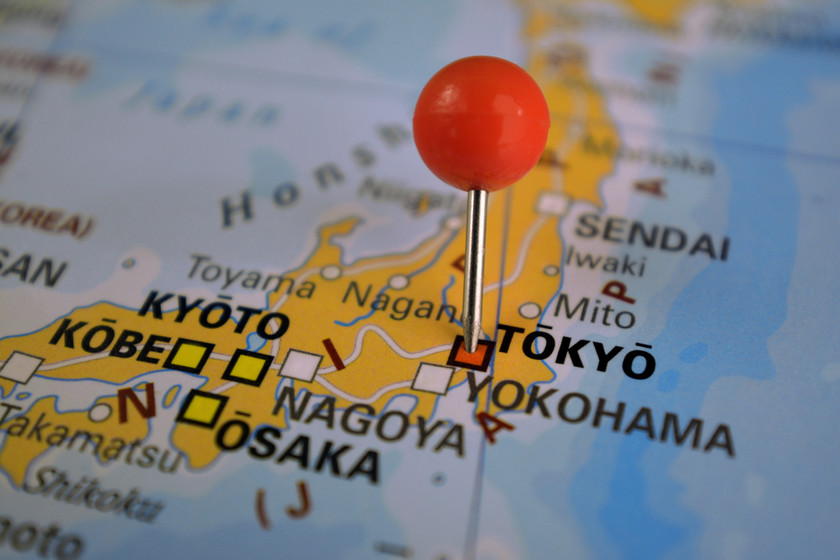 Tokyo and Kyoto are approximately 450 kilometers apart and are connected by three main public transportation options. Depending on the method of travel, journey times can range from just over 2 hours to as much as 8 hours. The best option largely depends on individual priorities—whether speed, budget, flexibility, or overall travel experience takes precedence.
Tokyo and Kyoto are approximately 450 kilometers apart and are connected by three main public transportation options. Depending on the method of travel, journey times can range from just over 2 hours to as much as 8 hours. The best option largely depends on individual priorities—whether speed, budget, flexibility, or overall travel experience takes precedence.Japan’s world-renowned Shinkansen high-speed bullet train is the fastest and most dependable way to travel, known for its exceptional punctuality and comfort. However, alternatives such as highway buses and domestic flights may better accommodate travelers with different needs or budgets. The following sections will explore these transportation options in detail to help first-time visitors select the most suitable route for their journey.
Comparing Travel Options Between Tokyo and Kyoto: Shinkansen or Bus or Flight
Wondering which transportation option fits your travel needs best? The table below breaks down the key differences between the three most common ways to travel between Tokyo and Kyoto— Shinkansen, highway bus, and domestic flight—across four key factors: travel time, cost, comfort, and flexibility.
|
|
Travel Time |
One-Way Fare |
Comfort Level |
Flexibility |
|
🥇Shinkansen |
from 2hr 10min to 3hr 40 min *Varies by the types of train services. |
from ¥13,320 for Standard Cars, up to ¥19,040 for Green Cars* |
● Smooth, punctual and clean. |
●Frequent departures throughout the day. |
|
🥈Highway Bus |
from 7 to 8 hr |
from ¥3,000 to ¥8,000 |
●Limited space in budget classes. Premium services available in higher-grade bus types. |
●Mainly late-night departures. |
|
🥉Domestic Flight |
from 1hr 5min to 1hr 30min (upwards of 4 – 5 hr when including transit to and from city centers) |
from ¥5,000 to ¥20,000 (some airlines offer special fares for international visitors) |
●Comfortable in air, but requires multiple transfers. |
●Requires airport access. |
💡 Quick Guide to Choosing Your Best Route
●Shinkansen is best for first-time visitors, families, and those who value speed, comfort, and convenience—with frequent departures and central station access.
●Highway buses suit budget-conscious travelers or backpackers, especially those making overnight trips to maximize sightseeing time.
●Domestic flights usually aren’t the most efficient or practical choice for travel between Tokyo and Kyoto, unless your trip includes a stop in Osaka or you find a rare bargain fare.
The Fastest and Most Convenient: Shinkansen (Bullet Train)
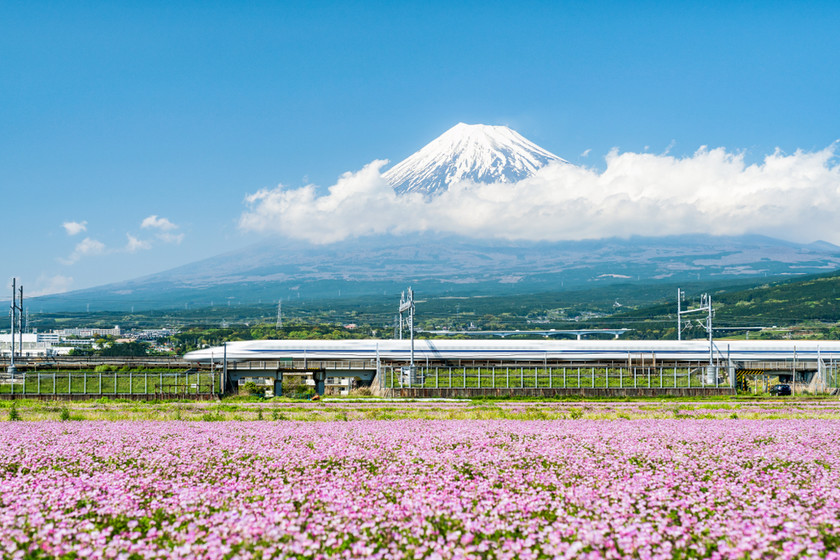 For most travelers—especially first-time visitors to Japan—the Shinkansen is the most recommended way to travel between cities. Operated by Japan Railway (JR), this high-speed rail service is renowned for its speed, frequency, punctuality, and comfort.
For most travelers—especially first-time visitors to Japan—the Shinkansen is the most recommended way to travel between cities. Operated by Japan Railway (JR), this high-speed rail service is renowned for its speed, frequency, punctuality, and comfort.If you’re traveling between Tokyo and Kyoto, the Tokaido Shinkansen line makes stops at Tokyo Station and Shinagawa Station in Tokyo, as well as Kyoto Station in Kyoto—all conveniently located in the heart of each city. With multiple departures every hour throughout the day, getting a seat is usually easy outside of peak travel times, even without a reservation. If the weather is clear, you’ll even be able to see Mount Fuji from the train window during your journey!
Before you board a Shinkansen between Tokyo and Kyoto, here’s everything you need to know.
🚄Tokaido Shinkansen Train Types and Service Differences
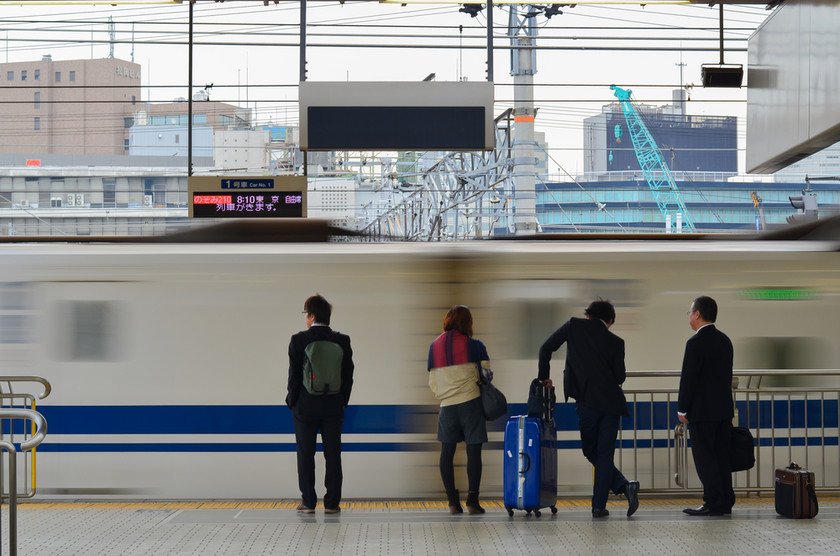 There are three types of Shinkansen services on the Tokaido Shinkansen Line which differ in travel time and number of stops:
There are three types of Shinkansen services on the Tokaido Shinkansen Line which differ in travel time and number of stops:
|
Train Type |
Travel Time (Tokyo–Kyoto) |
One-Way Fare |
Frequency |
Stops |
JAPAN RAIL PASS Validity |
|
🥇Nozomi |
about 2 hr 10 min |
Non-reserved seats: ¥13,320 Reserved seats: ¥14,170 Green Cars: ¥19,040 |
about every 10 min |
Fewest (major stations only) |
🔼An additional ticket is required |
|
🥈Hikari |
about 2 hr 40 min |
Non-reserved seats: ¥13,320 Reserved seats: ¥13,850 Green Cars: ¥18,720 |
about every 30 min |
Stops at more stations than Nozomi, including some regional stops |
✅Yes |
|
🥉Kodama |
about 3 hr 40 min |
Non-reserved seats: ¥13,320 Reserved seats: ¥13,850 Green Cars: ¥18,720 |
about every 1 hr |
Stops at every station along the Tokaido Shinkansen Line |
✅Yes |
💡 Tips for Choosing the Shinkansen Train Type
1. For most travelers, Hikari trains are the go-to option with the best balance between speed, frequency, and JAPAN RAIL PASS coverage. With departures every 30 minutes and only a few extra stops compared to Nozomi, Hikari is both efficient and convenient.
2. Nozomi trains are the fastest and most frequent option, with departures as often as every 10 minutes—and even every 3 minutes during peak hours—stopping only at major stations. However, they are not covered by the JAPAN RAIL PASS, making it better suited for those traveling without the pass or on tight schedules.
3. All three types of Shinkansen offer non-reserved seating, with Nozomi having the fewest non-reserved seats and Kodama having the most. If you’re traveling during peak seasons such as Golden Week (early May) or the year-end holidays , it’s recommended to reserve a seat in advance—especially since all Hikari trains become all-reserved seating during these busy periods.
🎫How and Where to Purchase a Shinkansen Ticket
 Shinkansen tickets can be purchased through the following methods:
Shinkansen tickets can be purchased through the following methods:1. JR Ticket Offices (Midori no Madoguchi):
Staffed service desks located in major JR stations. Ideal for travelers who need help selecting routes, booking reserved seats, or asking questions.
2. Ticket Machines:
Available at most JR stations and support multiple languages including English. These machines allow travelers to purchase both reserved and non-reserved Shinkansen tickets quickly and easily.
3. Online Reservation Platforms:
● Smart EX: Operated by JR Central, the system allows seat selection and payment with non-Japanese credit cards for Tokaido Sanyo Shinkansen (Tokyo–Kyoto–Osaka–Hiroshima).
🎫Is the JAPAN RAIL PASS Worth It for Your Tokyo—Kyoto Trip?
Whether the all-you-can-ride JAPAN RAIL PASS is worth purchasing depends largely on how often you plan to ride the Shinkansen. A one-way ticket between Tokyo and Kyoto in an Ordinary Car costs approximately ¥13,000 for standard seats, so even the shortest 7-day pass (¥50,000) may not be cost-effective if you’re only visiting these two cities for a round trip.
For tourists planning to take multiple long-distance train rides—such as side trips to Osaka, Hiroshima or beyond—the pass can offer significant savings when combining several journeys within the activation period.
However, only Hikari and Kodama trains are fully covered by the JAPAN RAIL PASS. The fastest Nozomi trains are excluded from standard coverage. That said, pass holders can purchase an [ONLY WITH JAPAN RAIL PASS] NOZOMI MIZUHO Ticket in advance for boarding a Nozomi train. The additional ticket costs ¥4,960 for travel between Tokyo and Kyoto and applies to both reserved and non-reserved seats in Green Cars and Ordinary Cars. For detailed, up-to-date information, visit the JAPAN RAIL PASS official site.
🧳 Bringing Large-Size Luggage Onboard
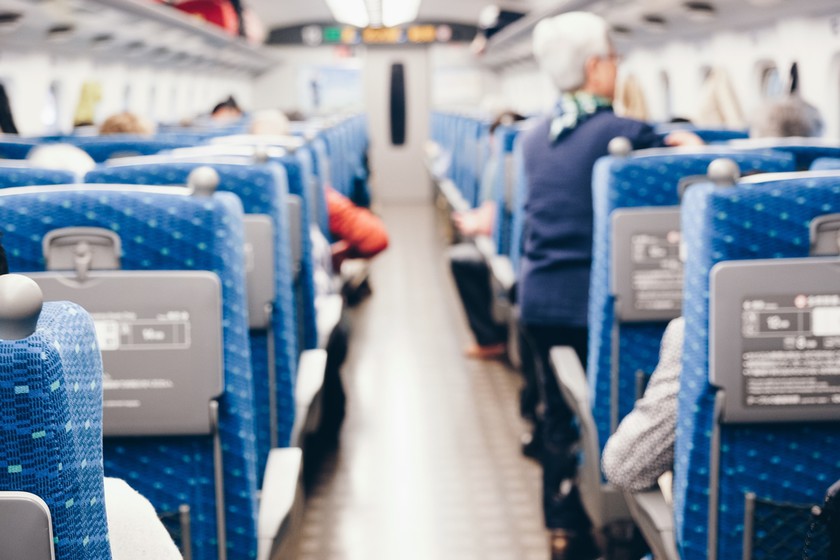 Travelers carrying oversized baggage—defined as any with a total dimension (height + width + depth) over 160 cm—should be aware of special rules introduced by JR Central.
Travelers carrying oversized baggage—defined as any with a total dimension (height + width + depth) over 160 cm—should be aware of special rules introduced by JR Central.1. Passengers traveling with oversized baggage are required to reserve a seat with an oversized baggage area or an oversized baggage compartment in advance. However, starting from July 1, 2025, the oversized baggage compartment will become a designated storage area available without prior reservation on a trial basis.
2. Unregistered oversized baggage may incur a ¥1,000 surcharge.
The Most Budget-Friendly: Highway Buses
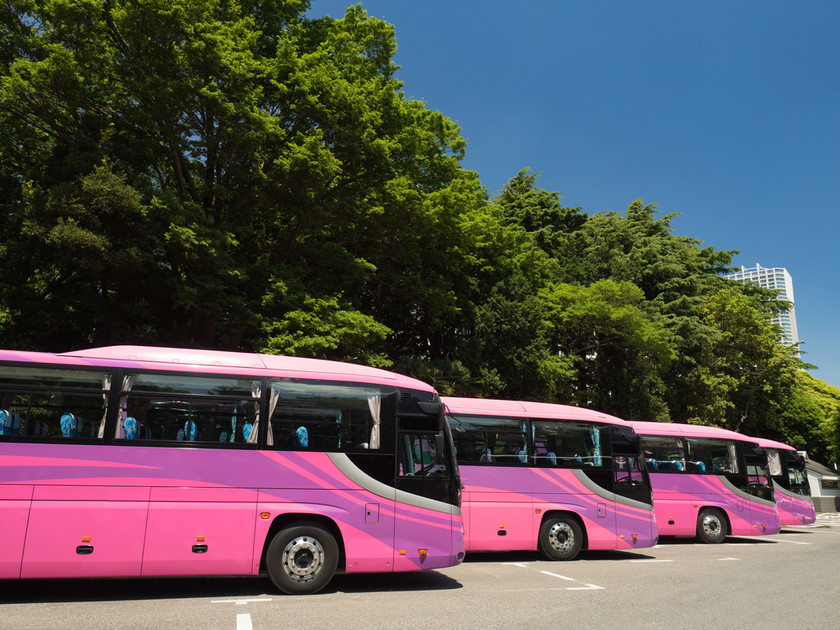 Highway buses are a budget-friendly option for travelers looking to save on transportation. These long-distance buses connect major terminals like Shinjuku and Ikebukuro stations in Tokyo with central Kyoto, and offer both daytime and overnight services.
Highway buses are a budget-friendly option for travelers looking to save on transportation. These long-distance buses connect major terminals like Shinjuku and Ikebukuro stations in Tokyo with central Kyoto, and offer both daytime and overnight services.Although buses are much slower than the Shinkansen, they are significantly more affordable, with fares starting as low as around ¥3,000 for 4-seat-row standard seats. Prices, however, can vary depending on the season—during consecutive holidays in Japan, fares can be as much as double those in the off-season.
 Comfort and onboard amenities also differ depending on the bus company and class of service. In recent years, luxury buses featuring semi-private cabins or more spacious reclining seats have become increasingly popular. Keep in mind, though, that these premium options are pricier—sometimes even comparable to the cost of a Shinkansen ticket.
Comfort and onboard amenities also differ depending on the bus company and class of service. In recent years, luxury buses featuring semi-private cabins or more spacious reclining seats have become increasingly popular. Keep in mind, though, that these premium options are pricier—sometimes even comparable to the cost of a Shinkansen ticket.Popular tourist-friendly highway bus operators in Japan include:
• WILLER TRAVEL: Offers English booking and a wide range of seating classes.
• JR Bus Kanto: Operated by JR with multilingual support.
The Least Practical Option: Domestic Flights
 Kyoto does not have its own airport, so flying directly between Tokyo and Kyoto is not possible and requires a detour. Travelers who opt to fly must depart from either Narita International Airport (NRT) or Haneda Airport (HND), and arrive in Osaka at either Osaka Itami Airport (ITM) or Kansai International Airport (KIX). From there, reaching Kyoto requires an additional train or bus ride of over an hour, adding both time and cost to your journey.
Kyoto does not have its own airport, so flying directly between Tokyo and Kyoto is not possible and requires a detour. Travelers who opt to fly must depart from either Narita International Airport (NRT) or Haneda Airport (HND), and arrive in Osaka at either Osaka Itami Airport (ITM) or Kansai International Airport (KIX). From there, reaching Kyoto requires an additional train or bus ride of over an hour, adding both time and cost to your journey.When you also factor in airport transfers, check-in, and security procedures, flying usually ends up taking longer than the Shinkansen, despite similar ticket prices. For this reason, domestic air travel is generally not recommended unless Osaka is one of your mid-stops, or you’ve managed to snag a discounted airfare.
HOTEL TAVINOS: A Smart Base for Tokyo—Kyoto Travelers
For visitors planning to explore both Tokyo and Kyoto, staying with HOTEL TAVINOS can benefit from both proximity to major railway stations and hands-on support from multilingual staff who understand the needs of international travelers.HOTEL TAVINOS operates three convenient outposts across Japan’s most visited cities: Asakusa and Hamamatsucho in Tokyo, and Kyoto City in the heart of the Kansai region. Each location is situated near Shinkansen hubs such as Tokyo Station and Kyoto Station, while our Hamamatsucho location is especially convenient for travelers flying in or out from Haneda Airport, connected with a mere 20-minute train ride with no transfers, making it one of the fastest and most stress-free options for airport access in the city.
Ready to plan your trip between Tokyo and Kyoto? Check availability and book your stay at HOTEL TAVINOS for convenient city access and friendly support.
